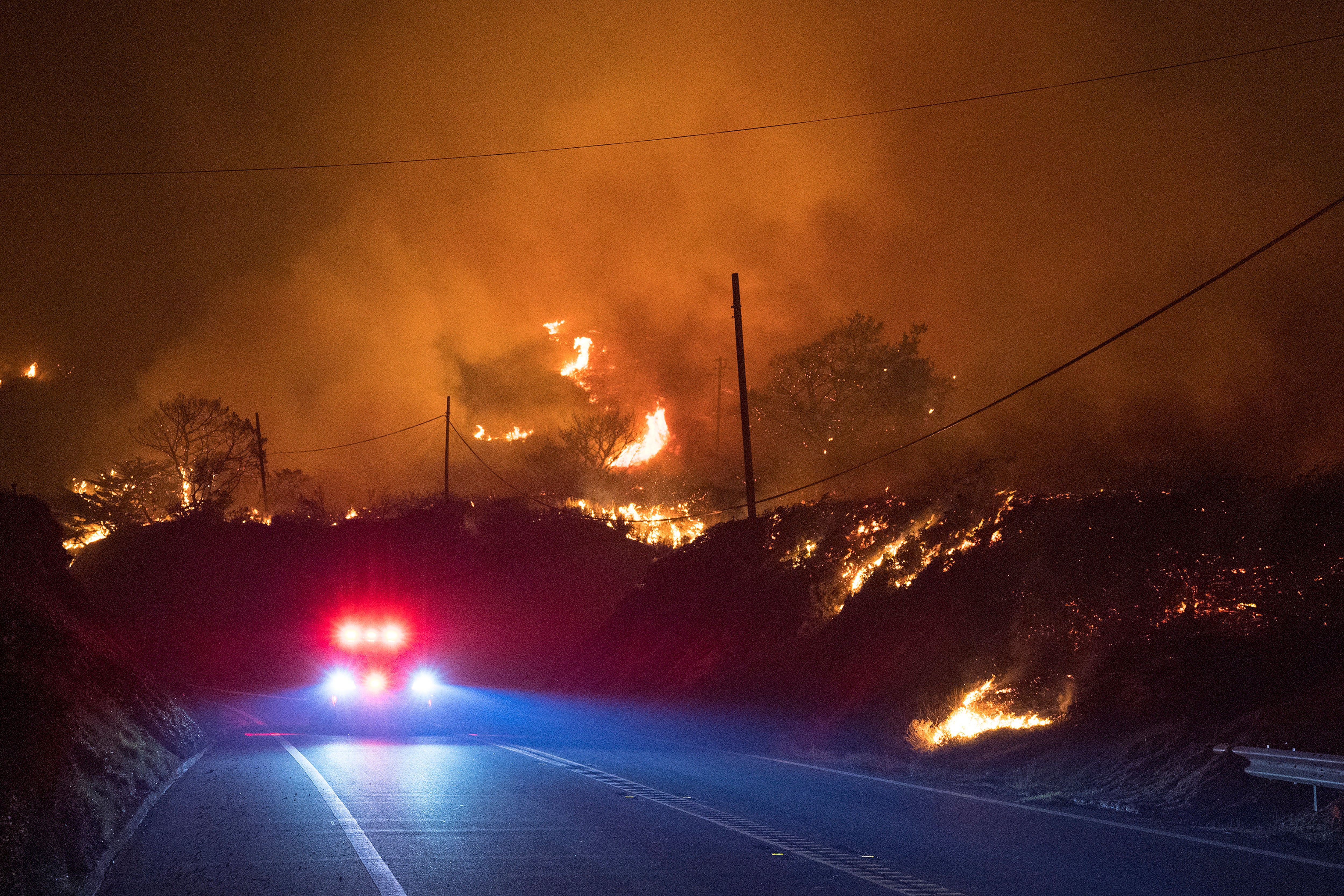Wildfire near Highway 1 in Big Sur: Dramatic photos of blaze in iconic area
About 1,500 acres on California’s scenic coastline are burning despite the cold January weather

Your support helps us to tell the story
From reproductive rights to climate change to Big Tech, The Independent is on the ground when the story is developing. Whether it's investigating the financials of Elon Musk's pro-Trump PAC or producing our latest documentary, 'The A Word', which shines a light on the American women fighting for reproductive rights, we know how important it is to parse out the facts from the messaging.
At such a critical moment in US history, we need reporters on the ground. Your donation allows us to keep sending journalists to speak to both sides of the story.
The Independent is trusted by Americans across the entire political spectrum. And unlike many other quality news outlets, we choose not to lock Americans out of our reporting and analysis with paywalls. We believe quality journalism should be available to everyone, paid for by those who can afford it.
Your support makes all the difference.A wildfire is burning along California's iconic Big Sur coastline, causing local officials to issue evacuation orders.
The state's wildfire management agency Cal Fire said on Saturday that the Colorado Fire had burned about 1,500 acres since its beginning in the Palo Colorado Canyon near Monterey at 5.19pm on Friday.
As of Saturday morning the fire was only 5 per cent contained and had led to the partial closure of the coastline's famous Highway 1.

Photos showed flames burning below the Rocky Creek Bridge, an arch bridge on Highway 1 about one mile south of the better known Bixby Creek Bridge.
The US National Weather Service (NWS) said it was unusual to see fires taking hold along the damp section of coastline, which has "little or no fire history", especially in January.
"Anecdotally it seems as though the long-term drought is acting like a chronic illness, where even recent rains and cold winter weather isn't helping to keep fires from developing," said the NWS in the small hours of Saturday morning.
The agency added that measurements of the fire's available fuel were normal for this time of year, which would usually mean no active wildfires.

California is currently suffering from a severe long-term drought, extending its summer and autumn fire season by making its forests dryer and more volatile.
Many experts believe both the drought and the fires are driven partly by climate change, which they say has made regular extreme weather events more frequent and more severe.
The cause of the fire is still being investigated, and no injuries or deaths have so far been reported. Officials have not said how many people are being evacuated.
The stiff winds that blowed along the coast and into the San Francisco Bay Area at up to 35 mph on Friday appear to have played a role, in addition to knocking down trees and leaving about 30,000 people without power on Saturday morning.

Cal Fire assistant chief George Nunez told the San Jose Mercury News that the fire "made a run through the canyons", aided by winds blowing from multiple directions and moving "surprisingly fast for a fire around this time of year".
Mr Nunez said firefighters struggled to get to the blaze because the canyons were so steep and dark, meaning they could only start battling it in earnest on Saturday morning.
Join our commenting forum
Join thought-provoking conversations, follow other Independent readers and see their replies
Comments